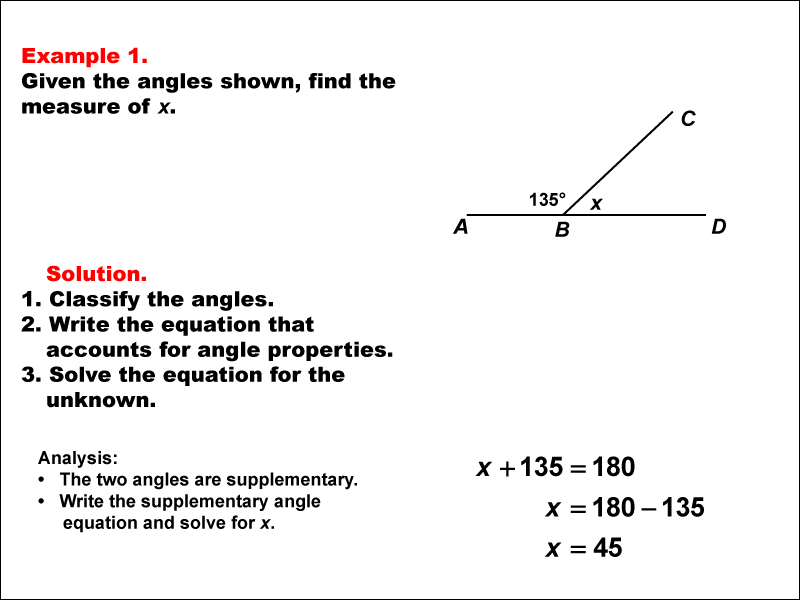
Display Title
Math Example--Solving Equations--Solving Equations Using Angle Properties: Example 1
Display Title
Solving Equations Using Angle Properties: Example 1

Topic
Equations
Description
This example demonstrates solving equations using angle properties, specifically focusing on supplementary angles. Supplementary angles are two angles that add up to 180 degrees. In this case, we have one known angle of 135° and an unknown angle x.
To solve such equations, we use the fundamental property of supplementary angles: their sum equals 180°.
The equation can be written as 135 + x = 180. To find the value of x, we subtract 135 from both sides: x = 180 - 135, resulting in x = 45°. This method of solving angle equations relies on understanding geometric properties and applying algebraic techniques. It's crucial to recognize the relationship between angles in various geometric configurations, such as supplementary angles, complementary angles, or angles formed by parallel lines cut by a transversal. By identifying these relationships, we can set up equations and solve for unknown angles. This process not only reinforces geometric concepts but also strengthens algebraic problem-solving skills. In real-world applications, such problems are essential in fields like architecture, engineering, and design, where understanding and calculating angles is crucial for structural integrity and aesthetic balance.
For a complete collection of math examples related to Equations Using Angle Properties click on this link: Math Examples: Equations Using Angle Properties Collection.
| Common Core Standards | CCSS.MATH.CONTENT.HSG.CO.C.10, CCSS.MATH.CONTENT.HSA.CED.A.1 |
|---|---|
| Grade Range | 9 - 11 |
| Curriculum Nodes |
Algebra • Expressions, Equations, and Inequalities • Applications of Equations and Inequalities Geometry • Angles and Planes • Definition of an Angle |
| Copyright Year | 2022 |
| Keywords | angles, solving equations |